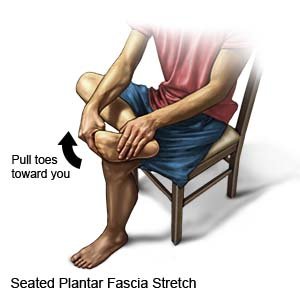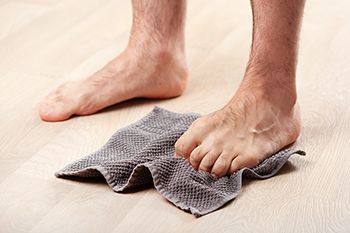Prevention is the goal, but whether you're doing prevention or rehab the following plan below will be helpful. Before the plan, here is the most basic guidelines to avoid injuries. I'm in my 40s and this is specifically for a couple friends in their 40s, but it generally applies to everyone.
- Many injuries can be avoided by gradually increase loads and intensities. A lot of time less is more in the long run. Be patient and you'll be fitter in the long run.
- One thing leads to another: Problems in one area of the body create problems in other areas of the body. If you're sensing an injury, explore and identify root causes, like muscular imbalances or inflexibility.
- Pain not equal to tissue damage. Pain is a signal telling you something is wrong. If you've been resting for months and you still have pain, the tissue may be repaired. See a professional if you can, and they will assist you with steps 1 and 4.
- Be proactive! Rest won't cure all injuries. You'll most likely need to strengthen something and or increase mobility to fully recover.
Now for the Plantar Fascia Plan.
What is the plantar fascia?
The plantar fascia (PF) is not a tendon (tendons connect muscle to bone, like the achillies tendon) and it isn't considered a ligament either (ligaments connect bone to bone). The technical name for the plantar fascia (PF) is aponeurosis.
The PF is a dense connective tissue made of collagen fibers, mostly Type I collagen. The PF connects the heel bone (at the calcaneal tuberosity) to the balls of the foot (metatarsal bones). It supports to the arch of the foot, provides shock absorption, and stores and releases elastic energy.
Why does my plantar fascia hurt?
The pain is probably in your heel and it's probably your plantar fascia.
As mentioned above, you overloaded the fascia by some combination of overuse, excess strain, or biomechanics (inflexibility, most likely in the foot, calf, or hamstring). You can't undo the past. But you can identify the issue. Check the flexibility and mobility in your feet, ankles, calves, hamstrings, and might as well check the hips too. Look back at your recent actives/training/work/etc. Have you increased volume and or intensity? Do you have tightness or other problems putting extra strain on your foot?
Flexibility Diagnostic
Test yourself on the following. If you do not have at least the minimal flexibility, you should work on increasing your flexibility. If you have the minimal flexibility, then you're fine and don't need to work on increasing your flexibility for running.
How long will it take to heal?
It could take weeks to months. There are three phases to consider: inflammation phase, repair phase, and remodel phase. People with chronic heel pain are probably well past the inflammation phase.
The first few days are the inflammation phase. The body is sending blood, cells, and nutrients to the damaged site. The heel might feel painful, but many runners will not notice the inflammation phase. There may be redness and swelling.
The next couple weeks the body repairs the tissue. Fibroblasts are working to create new collagen fibers. The new fibers (Type III collagen) are weaker than the original Type I collagen that was damaged. New blood vessels form to aid in supplying oxygen and nutrients. Scar tissue forms to assist the healing. The PF may feel stiff and painful, especially in the morning or after prolonged sitting.
The next months the new tissue will be remodeled. The Type III collagen matures into Type I collagen. The fibers realign and become stronger. The excess scar tissue breaks down. The fascia gradually regains its normal structure and function.
Expect even a mild plantar fascia injury to takes months to heal. For more severe and chronic cases it can take over a year to recover.
During these phases the injured person should work on strengthening and stretching.
What can I do?
- Remove the stress causing the injury and do not reinjury the fascia.
- Get appropriate sleep.
- Eat a healthy diet.
- See a medical profession, like a physical therapist.
- Massage and roll the plantar fascia and achillies tendon (AT). The AT and PF are closely connected, both anatomically and functionally.
- Follow the following exercise plan.
The Plantar Plan
Depending on how much time you have, make a plan using the following exercises. If you can, formally set time for 5-15 minutes 2-3 times a day, that's 10-45 minutes a day.
If not formally, informally make time by doing the following. Balance on one foot while you brush your teeth. Roll your feet on a baseball or frozen water battle while you work at a desk. You can do the towel curls without a towel on a rug or hard floor. Find other ways to work in the following exercises into your current daily routines. If you watch TV or browse the internet you have time! You can do towel curls in your car while you drive. Here is a good video that covers most of the exercises. The bolded exercises below are primary and the unbolded are secondary. There's overlap between the exercises too.
- Plantar Fascia Stretch- breaks up scar tissue, see above, and improve mobility of toes and ankle
- Calf Stretch (video)- similar to above
- Towel Curls (video)- strengthen muscles in feet
- Slow Calf Raises (the slower the better, 4-10 reps, do 60 seconds) strengthen AT and PF
- Single Leg Balancing (lots of options here)- strengthen feet, hips, core, stabilizers,
- Roll and Massage- break up scar tissue and alleviate pain



